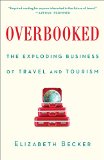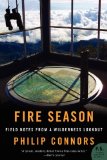Summary | Excerpt | Reviews | Beyond the book | Read-Alikes | Genres & Themes | Author Bio

A Yearlong Search for the Continent's Natural Soul
by Scott WeidensaulFrom the book jacket: In 1953, birding guru Roger Tory Peterson and noted British naturalist James Fisher set out on what became a legendary journey - a 30,000 mile trek around North America. They traveled from
Newfoundland to Florida, deep into the heart of Mexico, through the
Southwest, the Pacific Northwest, and into Alaska's Pribilof Islands. Two
years later, Wild America, their classic account of the trip, was
published.
On the eve of that book's fiftieth anniversary, naturalist Scott
Weidensaul retraces Peterson and Fisher's steps to tell the story of wild
America today. How has the continent's natural landscape changed over the
past fifty years? How have the wildlife, the rivers, and the rugged,
untouched terrain fared? The journey takes Weidensaul to the coastal
communities of Newfoundland, where he examines the devastating impact of
the Atlantic cod fishery's collapse on the ecosystem; to Florida, where he
charts the virtual extinction of the great wading bird colonies that
Peterson and Fisher once documented; to the Mexican tropics of Xilitla,
which have become a growing center of ecotourism since Fisher and
Peterson's exposition. And perhaps most surprising of all, Weidensaul
finds that much of what Peterson and Fisher discovered remains untouched
by the industrial developments of the last fifty years.
Comment:
Pulitzer Prize finalist Weidensaul retraces Peterson and Fisher's journey and
chronicles the changes, both good and bad, in this in depth account.
Amongst the bad news is the spread of invasive species, chemical pollution,
global warming, species decline, over-logging and urban sprawl (for example in
15 years Pennsylvania has increased its "urban footprint" by 47% while its
population has increased by only 2.5%).
However, there are some rays of sunshine: since 1953 there's been a rise in the environmental movement, new environmental legislation, new parks and refuges
and the return of some threatened species.
In the words of Kirkus Reviews, this is "a carefully documented, well-informed conclusion
that the jury's still out."
With starred reviews from Publishers Weekly and Booklist, a "highly recommended"
from Library Journal and a very positive review from Kirkus - this is a
must-read for anyone interested in the North American landscape.
'The Environmental Movement'
One or two of the reviews for Return to Wild America referred to the
"birth" of the USA environmental movement in the 1950s - which got me thinking
about what exactly the environmental movement is, and when it began, because
it would seem to me that the likes of John Thoreau and John Muir were protesting
things environmental long before the 1950s!
This is what I found....
First off, there seems to be considerable murky water surrounding the definitions of both
the "environmental"' and "conservation" movements - so let's not get into that!
Secondly, according to environmental historians, the first campaigns to conserve
natural resources and save wilderness occurred in the late nineteenth century
(such as John Muir's Sierra Club to protect Yosemite in 1892), and a few people were writing on the subject before that, such as Henry Thoreau ("in Wildness is the
preservation of the world," - from Walden). Some point to Thomas Malthus as the first to raise the alert with his essay on population written in 1798.
However, whoever sowed the seeds, there's no doubt that a powerful environmental movement did not
emerge in the USA until after World War II. Historians point to three key factors for
this rise:
![]() This review was originally published in The BookBrowse Review in January 2006, and has been updated for the
December 2006 edition.
Click here to go to this issue.
This review was originally published in The BookBrowse Review in January 2006, and has been updated for the
December 2006 edition.
Click here to go to this issue.

If you liked Return to Wild America, try these:

by Elizabeth Becker
Published 2016
Elizabeth Becker investigates global travel industry practices in an eye-opening examination of this $6.5 trillion phenomenon.

by Philip Connors
Published 2012
A decade ago Philip Connors left work as an editor at the Wall Street Journal and talked his way into a job as one of the last fire lookouts in America. Fire Season is Connors's remarkable reflection on work, our place in the wild, and the charms of solitude.
Your guide toexceptional books
BookBrowse seeks out and recommends the best in contemporary fiction and nonfiction—books that not only engage and entertain but also deepen our understanding of ourselves and the world around us.